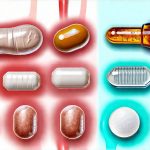Food Labels and Hidden Bladder Triggers
Living with an overactive bladder (OAB) or interstitial cystitis (IC) can significantly impact daily life. Many individuals find themselves constantly searching for ways to manage symptoms, often focusing on fluid intake and avoiding obvious irritants like caffeine. However, the complexity of food labels and the prevalence of hidden ingredients mean that many potential triggers are overlooked, lurking within seemingly innocuous products. Understanding how to decipher these labels is crucial for anyone seeking to gain control over their bladder health and reduce uncomfortable flare-ups. It’s not simply about eliminating certain foods; it’s about becoming an informed consumer aware of what you’re really consuming.
The challenge lies in the fact that bladder irritation isn’t always caused by substances we immediately associate with discomfort. Many common food additives, preservatives and even seemingly healthy ingredients can contribute to increased urinary frequency, urgency, or pain for sensitive individuals. Furthermore, individual sensitivities vary greatly; what triggers one person may have no effect on another. This article aims to empower you with the knowledge to navigate food labels effectively, identify potential bladder irritants, and make informed dietary choices that support your well-being. It’s about understanding that managing bladder health often requires a personalized approach grounded in awareness and observation. If you’re struggling to pinpoint triggers, consider using **food tools to track triggers in your daily diet**.
Common Culprits Hiding in Plain Sight
Many common food products contain ingredients that can subtly aggravate the bladder without immediately raising red flags. Artificial sweeteners, for example, are widespread in diet sodas, sugar-free candies, yogurt, and even some medications. While marketed as healthier alternatives to sugar, they have been linked to increased urinary frequency and urgency in some individuals with sensitive bladders. Similarly, artificial colors – often found in brightly colored snacks, drinks, and processed foods – can be problematic for those susceptible to IC or OAB symptoms. These aren’t always obvious; they hide behind complex chemical names on ingredient lists.
Beyond artificial additives, certain acids are known bladder irritants. Citric acid, malic acid, and ascorbic acid (Vitamin C) are frequently used as preservatives or flavor enhancers in beverages, candies, jams, and processed foods. While Vitamin C is essential for health, high concentrations can exacerbate bladder symptoms for some people. Preservatives like benzoates and sorbates, commonly found in pickled goods, sauces, and baked products, can also contribute to irritation. Recognizing these ingredients requires careful label reading and a willingness to opt for fresher, less processed alternatives whenever possible. The key takeaway is that even foods perceived as healthy can contain hidden bladder triggers. To help streamline this process, explore **quiet food prep habits to avoid agitating the bladder**.
Finally, it’s important to consider the increasing use of hydrolyzed proteins in many food products. These are often added to enhance flavor or texture but can be problematic for some individuals due to their potential inflammatory properties. They’re particularly prevalent in protein bars, meal replacement shakes, and processed meats. This highlights how even seemingly innocuous health-focused foods can inadvertently contribute to bladder issues.
Decoding Ingredient Lists: A Step-by-Step Guide
Navigating a food label effectively requires more than just glancing at the front of the package. The real information lies in the ingredient list, often printed in small text on the back. Here’s how to approach it:
- Focus on the first few ingredients: These make up the bulk of the product and are therefore most likely to impact your bladder health.
- Look for hidden names: Artificial sweeteners might be listed as aspartame, sucralose, saccharin, or acesulfame potassium. Artificial colors could appear as Red 40, Yellow 5, or Blue 1. Acids may be labeled as citric acid monohydrate, sodium citrate, or ascorbic acid.
- Be wary of “natural flavors”: This term is incredibly vague and can encompass a wide range of ingredients, some of which could be bladder irritants. If you’re sensitive, it’s best to avoid products with this ambiguous labeling.
-
Understand additives: Preservatives like sodium benzoate or potassium sorbate are common, but may affect some individuals.
-
When in doubt, research unfamiliar ingredients online using reliable sources such as the FDA website or reputable health organizations.
- Consider keeping a food diary to track what you eat and any corresponding bladder symptoms to identify your personal triggers. To help with this process, understanding **how to identify personal food triggers for flare-ups** can be invaluable.
The Role of Food Additives & Preservatives
Food additives and preservatives are ubiquitous in modern processed foods, designed to extend shelf life, enhance flavor, or improve appearance. However, for individuals with sensitive bladders, these seemingly harmless additions can be significant irritants. Sulfites, used as preservatives in dried fruits, wine, and some processed meats, have been linked to bladder symptoms in certain people. Even small amounts can trigger flare-ups. Similarly, MSG (monosodium glutamate), a flavor enhancer frequently found in Asian cuisine, soups, and processed snacks, has been associated with increased urinary frequency in some individuals.
It’s also worth noting that seemingly “natural” preservatives aren’t necessarily bladder-friendly. For example, rosemary extract, used as an antioxidant in many foods, can be irritating for some people. The challenge is that individual sensitivities vary widely; there’s no one-size-fits-all answer. The best approach is to carefully read ingredient lists and eliminate potential triggers one by one to see if your symptoms improve. For more comprehensive dietary adjustments, you might consider **rejuvenating food plans for long-term bladder ease**.
Understanding Acidic Foods & Beverages
Acidic foods and beverages are well-known bladder irritants, but the degree of irritation can vary depending on individual sensitivity. Citrus fruits (oranges, lemons, grapefruit), tomatoes and tomato-based products (sauce, ketchup), vinegar, and carbonated drinks are all common culprits. However, it’s not just about the inherent acidity of a food; how it’s processed can also play a role. For example, canned tomatoes tend to be more acidic than fresh tomatoes due to the addition of citric acid during processing.
Furthermore, many seemingly non-acidic beverages become more irritating when combined with other ingredients. Coffee and tea, while not inherently highly acidic, often contain caffeine which is a known diuretic and bladder irritant. Adding lemon or milk can further exacerbate symptoms for some people. It’s important to remember that hydration is vital for overall health, but the type of fluid you choose matters. Water remains the best option, followed by herbal teas (avoiding those with citrus ingredients) and diluted fruit juices in moderation. **Consider tracking your intake of acidic foods and beverages alongside your bladder symptoms to identify your personal threshold.** Planning ahead can also help – using **meal tips to avoid food triggers while socializing** ensures you stay on track.
It’s important to note that this information is for general knowledge and informational purposes only, and does not constitute medical advice. Always consult with a qualified healthcare professional for any health concerns or before making any decisions related to your health or treatment.





















